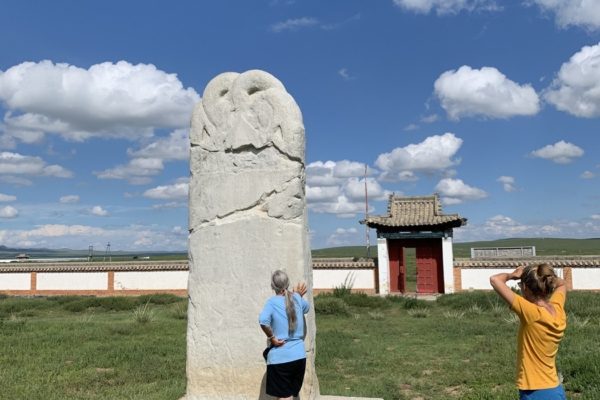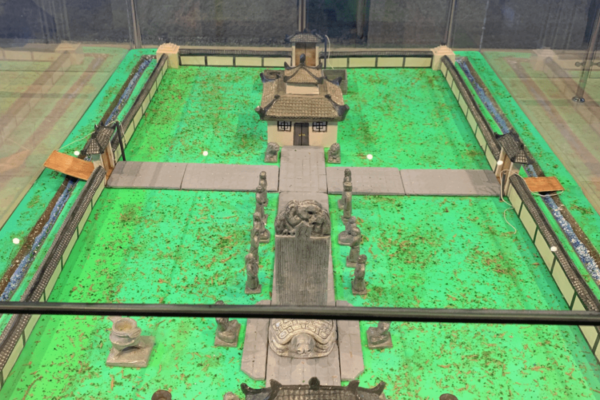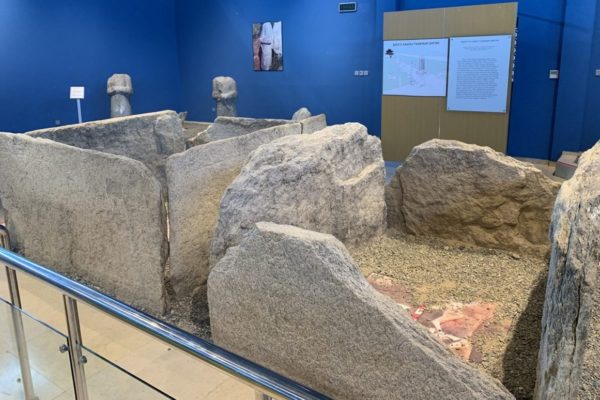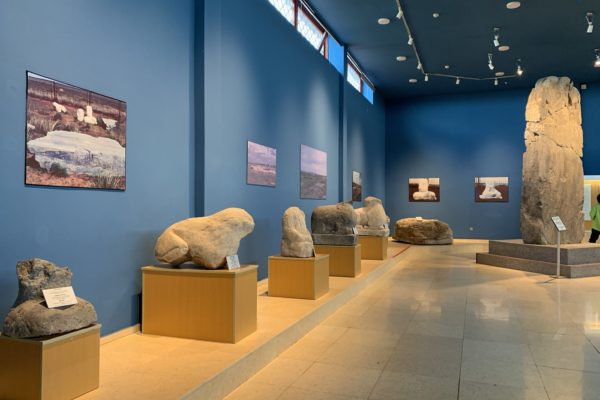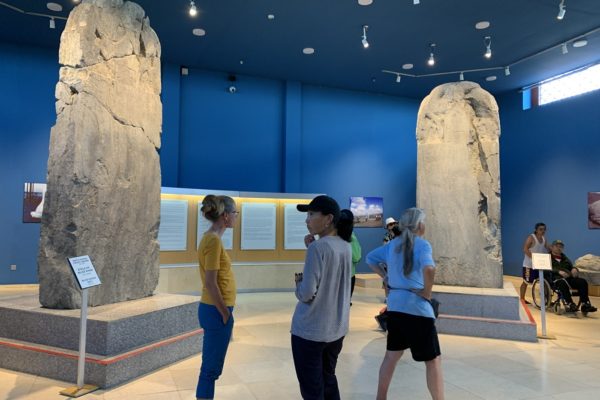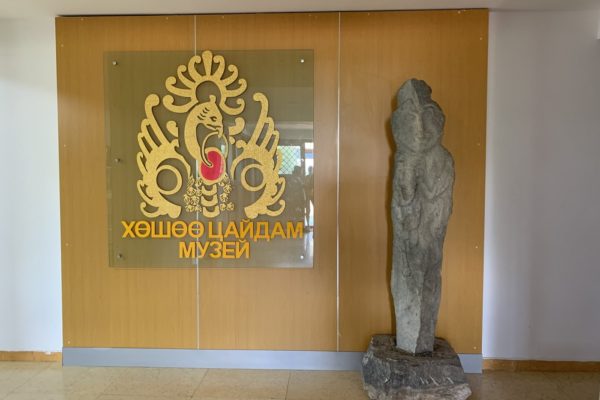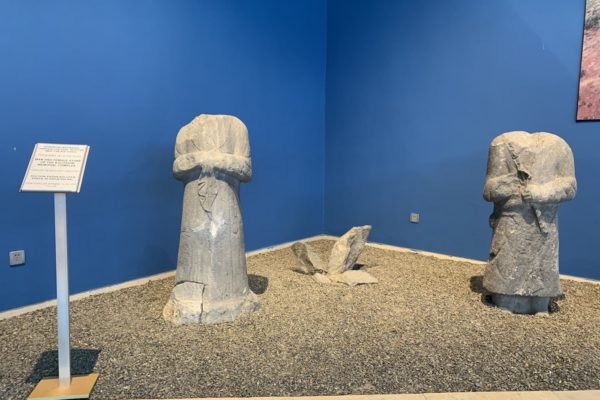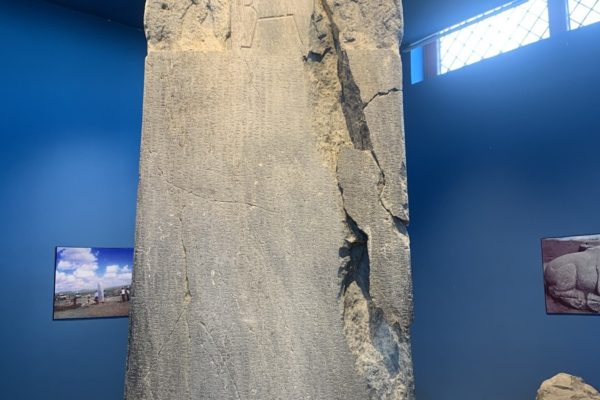The Bilge Khan Monument Memorial place in Khoshoo Tsaidam is situated in the Arkhangai Province, on the east bank of the Khogshin Orkhon River and southwest of Tsaidam Lake. It is a remarkable historical site that has been studied for over a century under different names such as Khushuu Tsaidam Monument, Orkhon Valley Monument, Kultegin’s Inscription, and Bilge Khan’s Monument, among others. The monument is located 36 km southwest of Ogii Lake and 47 km north of Kharkhorin, in the area of Tsaidam Brigade, Khashaat Sum.
The Monument of Kultegin
In 731, Kultegin, the younger brother of the last king of Turkey, Bilge Khan, passed away at the age of 49. Kultegin was known for his wisdom and military prowess, and he supported his brother when he ascended the throne. In memory of Kultegin, Bilge Khan built a sacrificial complex and idol temple on August 1, 732. The complex, surrounded by a moat, is 67 meters long and 29 meters wide, with a 1-meter thick brick wall. The empty space inside the wall was covered with bricks measuring 32 x 32 x 6 cm. In the center of the complex, facing the rising sun stands the illuminated statue of Kultegin, which is 383 cm high, 132 cm wide, and 46 cm thick.
The monument’s upper part is adorned with two folded dragons, and the image of the ibex, which is the seal of the Ashina clan, is the center of the inscription. A runic inscription with 10,000 letters in 68 lines is carved on three sides of the statue. Researchers call lines 1-13 the minor script, and lines 14-68 the major script. The inscription was carved by Kultegin’s grandson, Yolug Tegin, in just 20 days. It tells the story of how the Turkic state was founded, which tribes and countries Kultegin conquered when he was only 16 years old, how he fought, what kind of horse he rode, and how he worked tirelessly for his country. The inscription also describes how Kultegin made the poor rich, made the orphans art, made the nobles kneel, and bowed down the headless. It tells of how he established the, ruled the vast land from sunrise to sunset, and created a strong and safe country where people could live without fear.
The monument is a remarkable historical site that provides insight into the ancient Turkic Empire’s history. On the frog stone base of the monument, there is also a Turkic inscription that was studied by B. Bazilkhan in 1979. However, some of the inscriptions were so faded that they could not be entirely deciphered.
The Bilge Khan Memorial Complex
The Bilge Khan Complex is a historical site located about 1 km from the General Kultegin monument. This complex is the final resting place of Bilge Khan, who passed away on November 23, 734 BC. On July 22, 735, a sacrificial temple was erected in honor of Bilge Khan, and an illuminated statue was also installed at the same time. The inscription on the statue was engraved by Yolug Tegin, the grandson of Kultegin, and it took him 34 days to complete the task. The monument stands 345 cm high, 174 cm wide, and 75 cm thick.
On December 15, 1893, at a meeting held at the MAS in Copenhagen, the Danish scientist Willem Thomsen announced that he had successfully deciphered the inscriptions on the illuminated statues in both the Kultegin and Bilge Khan Complexes. The inscriptions are of great historical importance, as they provide insight into the ancient Turkic Empire and their way of life.
During his address, Bilge Khan warned his people to be cautious of the Tang Dynasty, who were known for their deceptive ways and soft words. He urged his people to be strong and well-organized, to establish a powerful military state that could resist the Tang Dynasty’s influence. His words were a reminder of the Turkic people’s past, who had lived among the Nankhiads and even fought for them, only to be met with hostility and betrayal.
In addition to the inscriptions, the complexes of Bilge Khan and Kultegin contain around 2,000 ancient artifacts. These include clay vessels, iron household and decorative items, parts of tiled roofs, and atriums. The tiled roof fragments feature images of nomads riding horses, which is an important historical monument. The complex also includes a square grave bed with a stone railing, which is believed to be a ritual symbol rather than an actual grave.
The Men Stones found in the complex are of significant historical importance, as they provide a realistic depiction of the appearance, clothing, and ornaments of the people living during that time. Despite the damage these monuments have suffered over the past thousand years, they were recognized as world cultural heritage by UNESCO in 1996 under the category of “Wonderful World Treasures”. Mongolia has taken an area of 20.8 square kilometers under state protection to preserve these historical sites.
Khoshoo Tsaidam Museum
The Khoshoo Tsaidam Museum was established in 2010 by the Mongolian government to promote and preserve the historical and cultural significance of the Turkic Empire. The museum has a permanent exhibition hall, a temporary exhibition hall, and an outdoor exhibition area. The museum houses many artifacts from the Turkic period, including the sacrificial virgins of Bilge Khan and General Kultegin. These monuments are of great historical significance, as they provide a glimpse into the lives of the famous kings and nobles of the 13th-century Turks. The joint Mongolian-Turkish project “Preservation, Study and Restoration of Some Monuments of the Turkic Period in Mongolia” between 1997 and 2007 recorded over 4,000 items during research and excavation, including gold, silver, and precious stones. The excavation also uncovered 9 human stones, 2 frog stones, 1 stone lion, 5 stone sheep, and 2 illuminated statues.

